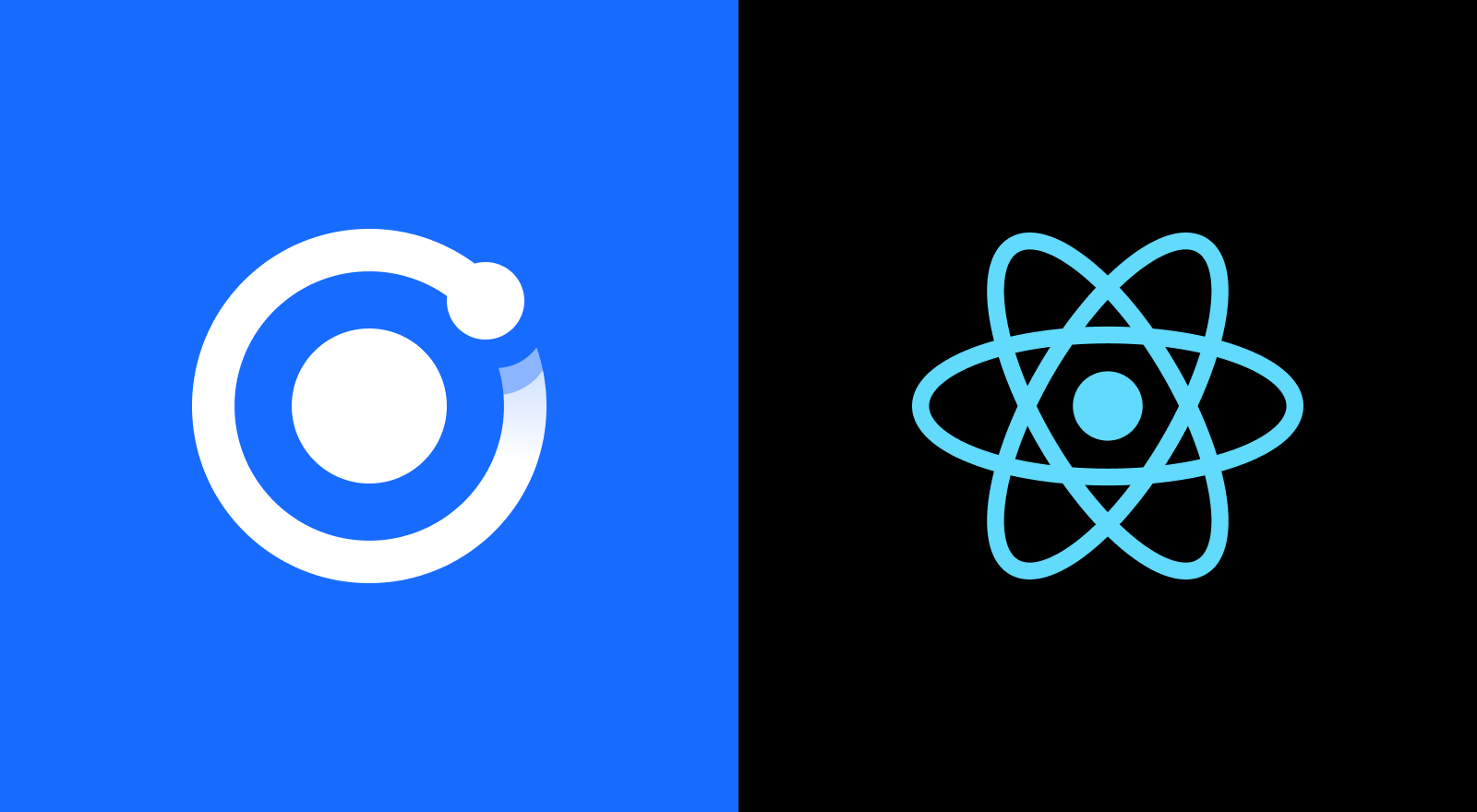React Native Vs Ionic: Is React Native Better Than Ionic Framework?
Cross-platform app development has actively become a need for an hour tool for all organizations leveraging app development services across the globe. As the market is filled with many comparison articles, it isn’t easy to find the relevant framework that works its magic in tuning more ROI along with the user base.
This is where this blog strikes in. We are going to discuss the dilemma that ambitious business owners face: which of the cross-platform frameworks, React Native vs. Ionic, is preferable for developing corporate apps? We’ll look at which framework is superior, React Native or Ionic, and why they both make it possible to develop apps and create prototypes using a single source of code.
In order to help you decide which is ideal for your project, this blog compares the popular frameworks Ionic vs React Native based on factors including popularity, architecture, compatibility, framework complexity, developer experience, performance, and more.
What is React Native Vs Ionic React?
A few decades back, the cross-platform app development industry was dominated by hybrid frameworks like PhoneGap and Ionic. React Native joined the market to make it simpler to design native apps. For the development and support of mobile apps for iOS and Android, separate specialist teams were necessary.
Ionic React and React Native, however, follow a distinct path. They allow you to create cross-platform applications and gain the advantages of having a single codebase. They do not fall under the same umbrella, though, because Ionic is a hybrid app framework. Before contrasting these two mobile app development alternatives—Ionic React vs. React Native app development in 2023—let’s briefly go over the key terms.
Mobile App Development for Native Vs Cross-platform:
Currently, there are several approaches to making a mobile application. The disadvantage of utilizing native code is that it requires two teams to work on the product: one focused on the iOS environment and the other on the Android ecosystem, despite the fact that using native code improves speed.
Industry-standard web app development technologies like JavaScript, HTML and CSS are used by cross-platform libraries to mimic native interactions. The hybrid method offers the advantage of speeding up mobile development by employing a single project for all platforms and offering a consistent UX across channels.
After this succinct introduction, let’s explore the two most well-liked tools for building cross-platform mobile apps: Ionic and React Native app development services.
Head on to this blog to know more about Native Vs Cross-platform mobile app development.
What is React Native app development?
Instead of developing native iOS and Android apps, use JavaScript and React to do so much more quickly and affordably.
Making cross-platform, genuinely native apps is the main objective of the React Native framework. The most popular programming languages for making native iOS and Android apps are Objective-C and Swift. In 2015, React Native became an open-source technology, and since then, its use has increased substantially. We have also written a thorough blog to explain the benefits of using React Native.
Introduction of Ionic Framework
Deliver unified user experiences across all channels with a single, universal codebase.
In a nutshell, the Ionic framework is a hybrid development tool that makes it possible to build apps from a single codebase. Applications for the PC, web, iOS and Android platforms may then be made using the code. The first version of Ionic was a free booklet that described the differences between hybrid and native apps.
Before we move further, let’s also know the latest version of Ionic v6 below!
What’s new in Ionic v6:
1. New Elements
- Breadcrumb component for ions
- Accordion-like ion component
- New ion-DateTime
- Modal bottom sheet for ions
- Redesigned ION model
- Ion-select was updated.
- Ion-popover
- Updated ion-item component
2. New releases: Adjusted Release Timetable
3. Design Changes in iOS and Android
- Refresh the toolbar theme by pulling
- The new dark mode modal styles for iOS
- Both the ion header and ion footer components include a collapse option.
- new input formats
- Addition of error and helpful text
- Character counter upgraded with popover interface and ion-select using the most recent material designs
4. Changes in Performance and Tooling
- Built-in custom elements
- Multiple Build Tools (Vite, Rollup, and ESBuild)
5. Platform Detection Customization
6. Ionic Vue Routing
7. TypeScript Improvements

React Native Vs Ionic: Popularity Comparison
The communities and popularity of both Ionic and React Native are booming. So, which one is popular– ionic or React Native? Let’s investigate.
- AppBrain study indicates that over 32K apps were created using React Native. In comparison, 26K apps have been made using the Ionic framework.
- React Native holds a 4.67% market share compared to Ionic’s 3.72%.
- React Native was used to producing 6.38% of the top applications, whereas Ionic only contributed 0.21%.
- According to the Stack Overflow Developer Survey 2021, React Native is rated sixth globally among all technologies with a market share of 14.51%. Ionic did not, however, rank among the top technologies in this poll.
- According to Statista, React Native is the second-most popular cross-platform mobile framework with a 38% market share. Comparatively, Ionic, which has a 16% market share, is the fourth most popular cross-platform mobile framework.
- According to Github, Ionic has 47k stars and 13.7k forks, whereas React Native has 102k stars and 22k forks.
React Native Vs Ionic App Performance Comparison
The most essential need for any framework in the market is React Native Performance. You can find a tonne of blogs comparing the two in terms of performance if you search the internet. However, none of them compare the performance metrics of Ionic vs. React Native. So let’s compare the two frameworks to help you in the same.
1. Launch Time
The first comparative statistic is the boot time, or more precisely, the amount of time it takes for your software to launch. In order to estimate boot time, two factors must be considered: cold boot and warm boot.
With this in mind, the cold boot times for React Native and Ionic were roughly 1.5 seconds while the warm boot timings were about 1 second.
2. Smooth Scrolling
The second head is the scrolling’s smoothness. There is a widespread misconception that Web Native apps render more slowly. However, there wasn’t much of a difference when we compared the two. It is wise that the smoothness is acceptable for the user at 60 frames per second. The fact that ionic and React Native completed their tasks in around the same amount of time (about 16.67 milliseconds) proves that there is not much frame loss.
3. Native Transitions
It’s a frequent misconception that web-native apps lose their native feel as users move through the application’s routed pathways into a detail page and return for transitions like “push” and “pop.” However, that is only a rumor and not an actual reality.
This paradigm is also properly fit by the Ionic SDK. These transitions are not restricted to frameworks that coordinate native UI controls. The web is also a viable option.
4. Platform-specific or Unified Styling
The market is divided on styling; some believe that styling should be brand-centric, while others believe that styling should be OS-specific. The two are supported by Ionic, though. With the use of Ionic’s Adaptive Styling, an Extensive UI Toolkit, your app platform may become adaptive while retaining its native characteristics and requiring no configuration. But you may override standards using CSS variables if you prefer a brand-centric style regardless of the OS.
To achieve this native appearance and feel, React Native app development employs native UI components. However, there isn’t much of a difference between React Native and Ionic that can be seen with the unaided eye that makes one choose one over the other.
Architectural Differences Between React Native Vs Ionic
The architectural differences between React Native and Ionic apps may be by the labels “nearly native” and “web-first.”
1. React Native Architecture
Multi-platform mobile apps may be structured using the React Native framework.
React Native is “almost native.” Despite the fact that Javascript and React were used to develop the applications, the widgets that they built on the top are totally native to iOS or Android.
React Native is not a true native app since it still requires a Javascript bridge to link the native components to the compressed Javascript and React code. An abstraction with complete control over the platform’s UI modules is React Native. Because all of the Interface components are native to the framework, React Native apps look and feel very similar to native apps.
2. Ionic Architecture
With one shared code base, online, cross-platform mobile, and desktop apps can be created using the Ionic architecture.
To create mobile apps, One is only a wrapper that receives HTML, CSS, and Javascript code and inserts it into a WebView. The WebView is connected to the Ionic codebase at runtime through a system like Cordova or Capacitor. A mobile website that has been converted into a mobile application is all that an Ionic application is.
React Native Vs Ionic: Language Stack
React Native: JavaScript and React.JS Engineering
It makes use of JavaScript, one of the most widely used high-level, dynamic programming languages at the moment. Additionally, depending on their needs, it enables product owners to develop modules in Objective-C, Swift, or Java.
Ionic: Develop with a Superset of JavaScript- TypeScript
The Ionic framework helps product owners easily translate the language by using web technologies like JavaScript, HTML5, and CSS to develop apps. Accessing native platform controllers requires a Cordova wrapper. Ionic’s core is built on the Angular framework and written in Sass.
Ionic’s main programming language is TypeScript, a superset of JavaScript that compiles regular JavaScript. The use of TypeScript improves the quality of the code and detects and fixes typing errors. However, TypeScript is not required; instead, JavaScript can be used natively.
React Native Vs Ionic: Documentation
Documentation is one of the most important aspects of a framework that is developer-friendly. With the aid of comprehensive documentation, developers may simply resolve issues and find answers to their questions.
Both Ionic and React Native have top-notch documentation. The documentation for React Native even includes editable code samples with outputs. The depth of knowledge provided in Ionic’s documentation more than makes up for its lack of editable code samples. The Ionic manual even includes recommended practices for integrating your favorite web framework with Ionic.
React Native Vs Ionic: Cost of Development
From a corporate perspective, both approaches provide advantages in terms of cost and time savings. However, when comparing the two frameworks, Ionic is much less costly than React Native.
This is a result of Ionic’s ability to let you develop hybrid applications once and use a single codebase to operate them across several platforms. Although React Native is free, you may need to spend a considerable amount of money on a qualified React Native developer. The starting salary for React Native engineers is $20.
On the other hand, you may select between the open-source and paid versions of Ionic based on the features. Basic ($499/month), Standard ($2499/month), and Enterprise ($5999/month) are the three price categories for Ionic (custom pricing).
Decide on React Native if,
- React Native is already part of your website or application.
- Your development group is an expert in React.
- The significance of your project’s reliance on native platforms cannot be overstated.
- You have the tools and the time you need to complete your assignment.
- To pay the high development expenditures, you already have enough cash on hand or a movable budget.
Choose Ionic if,
- In the future, you want to create Progressive Web Apps (PWA).
- To offer a web and mobile experience, you need to use web development skills.
- You’re looking for a system that will ensure good performance in the future.
- You want to develop and grow mission-critical, enterprise-level software.
- You want to develop an app for business owners and have web app development knowledge.
Conclusion
So to answer your question– is React Native better than Ionic, we conclude by stating Yes it is! The developer community is being consulted as the React Native team implements some important architectural modifications to the framework. Microsoft recently announced that it will assist the React Native team in increasing support for desktop apps. This suggests that your software’s desktop version may be created utilizing the same codebase. It’s significant news, particularly for chat application creators as the majority of customers look for desktop capabilities in chat apps.
On the other hand, Ionic, which consistently improves the framework and releases new versions, has proven itself agile and adaptive to its user base. It’s a wonderful indication that the Ionic team wants to expand and provide new and improved functionality when they implement new features like Ionic Payments.
Hopefully, we were able to enable you in choosing the best cross-platform app development framework in 2023 between React Native and Ionic. For more information, you are advised to contact a mobile app development company for better understanding and outcomes in the future.




